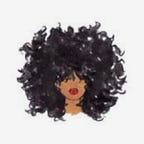Hannah Montana and The Power of Representation in Children’s Media:
While reading the book More Than Enough by Elaine Welteroth, I was hit in the face with her stories of not feeling black enough growing up. She shared experiences of growing up around white peers and conforming to fit in. She recognized the lack of people that looked like her in her favorite magazines and T.V. shows and made the (quite logical) assumption that being black isn’t ideal or something to be proud of. ( If you want to know more you should read her book! I promise it’s worth the read). While listening to her words — I had the audiobook — , memories resurfaced of similar experiences I had growing up. I remember watching T.V. and not seeing a single person that looked like me on my favorite shows, save “That So Raven”. My favorite show was Hannah Montana. I mean, who wouldn’t love the story of a pretty teen girl with a double life as a rock star? I and many other girls were able to project our dreams of stardom and popularity onto her character. Now I’m not going to lie, I could have watched other shows with black leads like The Proud Family or how could I forget Little Bill or That’s So Raven. There were a few prominent shows that I loved, but none compared in my mind to the sheer stardom and “larger than life” appeal of Hannah Montana. With her pale skin, thin frame, and long, straight blond hair, Miley Cyrus transformed into the ideal representation of beauty for teen girls. I didn’t question this as a child; I was too busy singing “Ordinary Girl” and “Nobody’s Perfect” with my school friends. I so desperately wanted to be like her. I wished my hair was straight like hers. Even the one black character I can remember, Amber, had long straight hair.
Amber Addison and her best friend Ashley Dewitt were the two recurring characters of color on the show. While their “OOOh TSS” handshake was ICONIC, they were the mean girls with Miley and Lilly as their main rivals. This set them up as the main antagonists of the show, along with Mikaya, the rival pop star played by Selena Gomez who appeared in a few episodes.
This programmed my young, impressionable mind to not only view people of color as the villains, but it also made me insecure in my own blackness as a child. I wanted nothing to do with it and thought that the more I tried to assimilate, the better I would feel. It wasn’t until recently, in my late teens, that I started to understand the effects this lack of positive representation had on my perception of myself. It’s not enough to have a few characters sprinkled in for diversity. We need not only racial diversity but a variety of personalities too. Now don’t get me wrong, I still LOVE Hannah Montana and even listened to a few songs while writing this, but imagine how much more I and many black and brown girls like me would love it if the characters meant to represent us were more than one-dimensional mean girls. Like Hannah Montana, the shows kids watch can leave a meaningful and lasting impact, if only given the right amount of care and attention to details they deserve.
